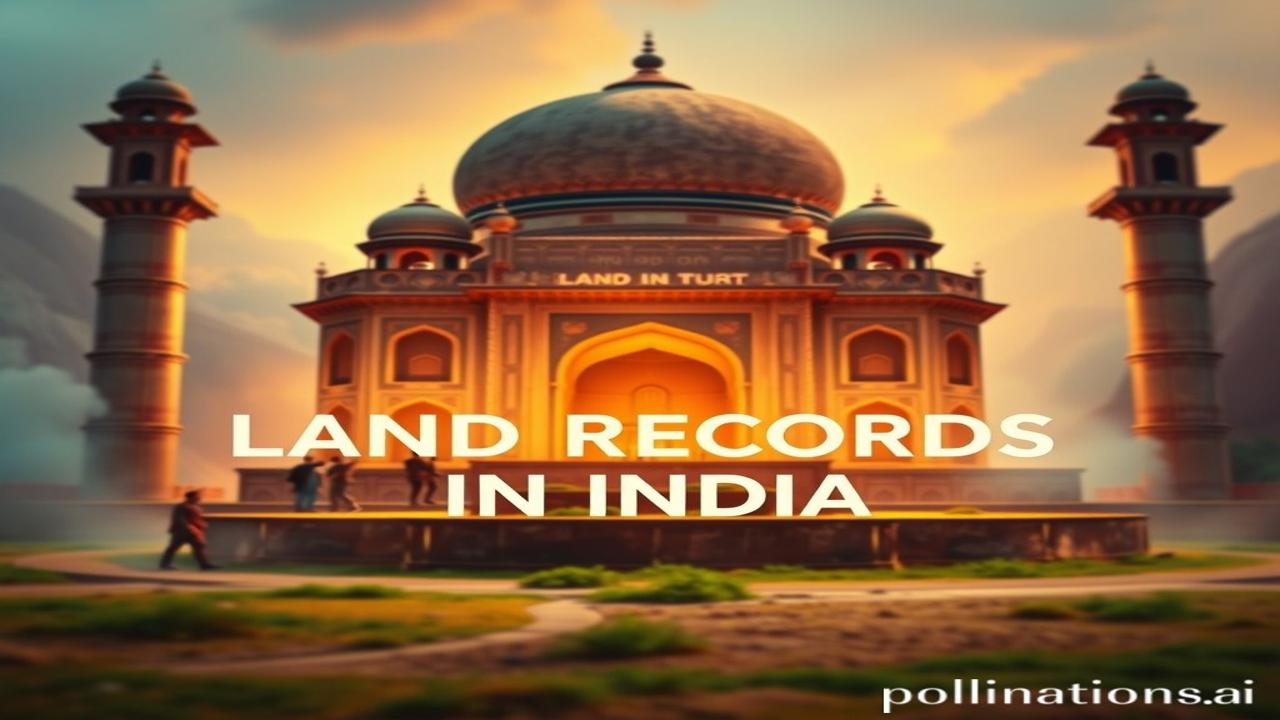Mitti Ki Zubani: The Story of Land Records in India
Kabhi socha hai, apne dada ji ki zameen ke kagzat kitne purane ho sakte hain? Kitni kahaniyan chupi hongi un pile pade pannon mein, jinhe har barish mein bachana padta hai? Waqt ki dhool mein, woh sirf zameen ka hisab nahi, balki humare itihas, humare parivar aur humari pehchan ka ek zinda saboot hain. Chaliye, aaj inhi land records ki kahani ko khojte hain!
Zameen Ka Hisab: A Brief History
Land records, yaani zameen ke kagzat, sirf aaj ki baat nahi. Inka itihas bahut purana hai. From the ancient Mauryan Empire to the British Raj and beyond, every ruler understood the importance of keeping track of who owned what.
What is it? Land records are basically documents that prove ownership of a piece of land. They can include maps, surveys, title deeds, and even tax receipts.
When and Where? Think back to the Mauryan Empire (322-185 BCE). Chanakya’s Arthashastra talks about surveying land and keeping records for taxation. Then came the Mughals, who introduced the Zabti system, a detailed land revenue system. The British, of course, refined it even further, creating the foundation for the modern land record system we have today.
Why is it important? Imagine bina land records ke kitna chaos hoga! Who would own what? How would disputes be resolved? Land records provide legal proof of ownership, prevent fraud, and help governments collect taxes. Yeh sirf kagaz nahi, yeh shanti aur vyavastha ki neev hain.
Zameeni Sach – Log aur Jeevan: The Realities on the Ground
Let’s travel back in time. Picture a village in the Mughal era. A farmer, Kishan, is working tirelessly on his small plot of land. He needs to pay lagan (land tax) to the Mughal officials. The patwari, the village accountant, carefully notes down the details of Kishan’s land, the crops he grows, and the amount of tax he owes.
“ अरे किशन, इस साल फसल कैसी है?” the patwari asks, his quill pen scratching on the parchment.
“सरकार, बारिश तो ठीक हुई है, पर कीट लग गए। लगान कैसे भरूंगा?” Kishan replies, his voice laced with anxiety.
Ma Rukmini helps Kishan pack his lunch. She understands the anxieties of Kishan when crops get destroyed by pests. Ma Rukmini prays for his safe return and his hard work to turn fruitful.
The patwari sighs. He knows Kishan is honest and hardworking. He makes a note of Kishan’s situation, hoping to get him a small reprieve. This scene, repeated across countless villages, highlights the crucial role of land records in people’s lives. They determine their livelihoods, their social standing, and their relationship with the ruling power.
Dharohar aur Pehchan: Cultural Significance Today
Today, the echoes of these historical land records resonate in several ways. Think about:
- Family Disputes: How often do you hear of families fighting over ancestral property? Land records are often the key to resolving these disputes.
- Real Estate: Buying or selling property? You’ll need to deal with land records to ensure a clean title.
- Government Schemes: Many government schemes, like those providing subsidies to farmers, rely on accurate land records for implementation.
Yeh sirf legal formalities nahi hain. Yeh Bharatiyata ka ek important hissa hain. They reflect our connection to the land, our history, and our identity. Our ancestors lived and died on these lands, and their stories are etched in these documents.
Mazedar Tathya ya Bhram-Bhanjak: Fun Facts & Myth Busters
- Myth: Land records are a modern invention.
- Truth: While the modern system is relatively recent, the practice of keeping track of land ownership dates back thousands of years.
- Shocking Truth: Even today, land record systems in many parts of India are outdated and inefficient, leading to corruption and disputes. Efforts are underway to digitize these records and make them more accessible.
Drishya aur Bhavnaayein: Visual & Sensory Layer
Imagine walking into an old tehsil office. The air is thick with the smell of old paper and ink. Dust motes dance in the shafts of sunlight filtering through the windows. You can hear the rustle of files, the scratching of pens, and the murmur of conversations. The temple walls feel cool to the touch, and you can imagine the sounds echoing in the streets outside during festivals. This is where history comes alive, in the very documents that define our relationship with the land.
Antim Vichar ya Uddharan: Closing Insight or Quote
“Dharti hamari maa hai, aur zameen ke kagzat uski kokh ki kahani.” The land is not just a resource; it’s our mother, and land records are the story of her womb, a repository of our past and a foundation for our future. Keep the land records updated, not just for legal reasons, but also for preserving the legacy of the ancestors.
